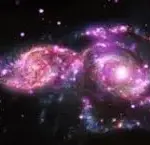 In his book, Dear Colleague, geographer and cultural polymath Yi-Fu Tuan writes:
In his book, Dear Colleague, geographer and cultural polymath Yi-Fu Tuan writes:
Culture, to the extent that it is quaintness and superstition, has rationality as its enemy. Let me illustrate with the emperor T’ai-tsung. An enlightened man, he found many of the beliefs and practices of his time tiresome. One day in the ninth month of the year 628, it happened that some albino magpies built nests in linked pairs on the palace grounds. Officials, believing this association of white birds with paired nest to be auspicious, congratulated the emperor, who far from being pleased, exclaimed in anger, “I have always laughed at my predecessors’ fondness for speaking about auspicious omens. A worthy man is an auspicious omen. How are white magpies beneficial to our affairs?” He thereupon ordered the nest thrown down and the birds released.
The emperor wiped out a quaint belief and replaced it with a rational viewpoint that could be accepted by enlightened individuals anywhere in the world. His rationality deserves cheers – but perhaps only two, for, on the downside, it tends to undermine our lovableness as human beings, which depend on having just these nonrational peculiarities. Look at it this way. No one will throw an affectionate arm around me because I am intelligent. If affection is shown me at all, it is because I am the sort of guy who believes in the auspiciousness of white magpies.
Comment: I think it is well for anyone who takes it upon him or her self to debunk myths or popularly held beliefs to understand what Yi-Fu Tuan is saying here. Humans adorn the naked body with jewelry, tattoos, and cloths. They adorn their world with myth, art, and other symbols and beliefs. Adherence to unadorned reality is one kind of virtue. Being able to create a more lovable reality is another. The adherent of unadorned reality might think that creating a more lovable reality simply means making a falsehood; but for a human, reality is always partly a construct. Why construct an ugly reality?
What appears to the rationalist as a superstition, may often be for the seemingly superstitious person, at least partly an aesthetic preference. Belief in the physical effectiveness of healing crystals, aromatherapy, astrology or kundalini yoga may make us scoff, but who is to deny the beauty of crystals, the sensory appeal of certain aromas, the aesthetics of the sacred geometry that underlies the horoscope, or the colorful symbolism of the system of chakras. One may not find such New Age aesthetics to one’s taste, but as even the rationalist must admit, there is, ultimately, no arguing with taste. If such beliefs create a more attractive reality for the holders of those beliefs, what business is it of ours to criticize them?












